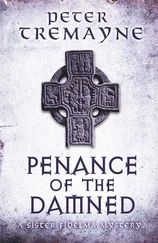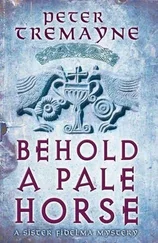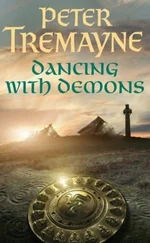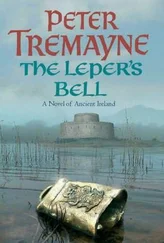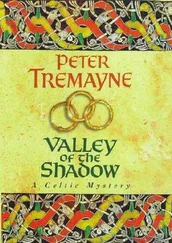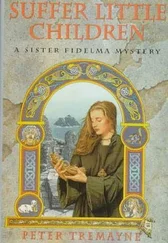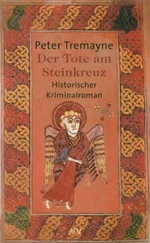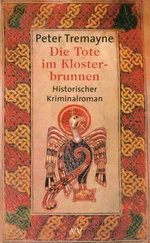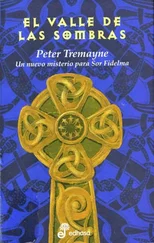‘What is it?’ she asked, wondering aloud rather than seeking an answer, for obviously the answer lay in the package.
The messenger shrugged between the mouthfuls of food he was masticating.
‘Some instructions from Ultan. You are requested to proceed to Rome to present the new Rule of the Sisters of Brigid for the blessing of the Holy Father. Ultan asks me to beg you to undertake this embassy for you are the best qualified and the ablest advocate of the Sisters of Brigit of Kildare, the Abbess Étain notwithstanding.’
Fidelma stared at the man, hearing his words but not really comprehending them.
‘I am to do what?’ she asked, scarcely believing her ears.
The monk glanced up, frowning as he took another bite of bread into his mouth. He chewed several times before answering.
‘You are to present the Regula coenobialis Cill Dara to the Holy Father for blessing. It is the request of Ultan of Armagh.’
‘Requesting me to go to Rome?’
Suddenly Sister Fidelma found herself hurrying along the vaulted cloisters of the abbey back to the refectory. She did not know why her heart was beating more rapidly or what made the day so suddenly pleasant and the future full of excitement.
No wild beasts are so cruel as the Christians in their dealings with each other.
Ammianus Marcellinus
( c . AD 330 – 95)
Sister Fidelma’s World
The Sister Fidelma mysteries are set during the mid-seventh century AD.
Sister Fidelma is not simply a religieuse, a member of the community of St. Brigid of Kildare. She is also a qualified dálaigh, or advocate of the ancient law courts of Ireland. As this background will not be familiar to many readers, this foreword provides a few essential points of reference designed to make the stories more readily appreciated.
Ireland, in the seventh century AD, consisted of five main provincial kingdoms: indeed, the modern Irish word for a province is still cúige, literally ‘a fifth’. Four provincial kings—of Ulaidh (Ulster), of Connacht, of Muman (Munster) and of Laigin (Leinster)—gave their allegiance to the Ard Rí or High King, who ruled from Tara, in the ‘royal’ fifth province of Midhe (Meath), which means the ‘middle province’. Even among these provincial kingdoms, there was a decentralisation of power to petty-kingdoms and clan territories.
The law of primogeniture, the inheritance by the eldest son or daughter, was an alien concept in Ireland. Kingship, from the lowliest clan chieftain to the High King, was only partial hereditary and mainly electoral. Each ruler had to prove himself or herself worthy of office and was elected by the derbfhine of their family—three generations gathered in conclave. If a ruler did not pursue the commonwealth of the people, they were impeached and removed from office. Therefore the monarchial system of ancient Ireland had more in common with a modern day republic than with the feudal monarchies of medieval Europe.
Ireland, in the seventh century AD, was governed by a system of sophisticated laws called the Laws of the Fénechas, or land-tillers, which became more popularly known as the Brehon Laws, deriving from the word breitheamh — a judge. Tradition has it that these laws were first gathered in 714 BC by the order of the High King, Ollamh Fódhla. But it was in AD 438 that the High King, Laoghaire, appointed a commission of nine learned people to study, revise and commit the laws to the new writing in Latin characters. One of those serving on the commission was Patrick, eventually to become patron saint of Ireland. After three years, the commission produced a written text of the laws, the first known codification.
The first complete surviving texts of the ancient laws of Ireland are preserved in an eleventh-century manuscript book. It was not until the seventeenth-century that the English colonial administration in Ireland finally suppressed the use of the Brehon Law system. To even possess a copy of the law books was punishable, often by death or transportation.
The law system was not static and every three years at the Féis Temhrach (Festival of Tara) the lawyers and administrators gathered to consider and revise the laws in the light of changing society and its needs.
Under these laws, women occupied a unique place. The Irish laws gave more rights and protection to women than any other western law code at that time or since. Women could, and did, aspire to all offices and professions as the coequal with men. They could be political leaders, command their people in battle as warriors, by physicians, local magistrates, poets, artisans, lawyers and judges. We know the name of many female judges of Fidelma’s period—Bríg Briugaid, Áine Ingine Iugaire and Darí among many others. Darí, for example, was not only a judge but also the author of a noted law text written in the sixth century AD. Women were protected by the laws against sexual harassment; against discrimination; from rape; they had the right of divorce on equal terms from their husbands with equitable separation laws and could demand part of their husband’s property as a divorce settlement; they had the right of inheritance of personal property and the right of sickness benefits. Seen from today’s perspective, the Brehon Laws provided for an almost feminist paradise.
This background, and its strong contrast with Ireland’s neighbours, should be understood to appreciate Fidelma’s role in these stories.
Fidelma was born at Cashel, capital of the kingdom of Muman (Munster) in south-west Ireland, in AD 636. She was the youngest daughter of Failbe Fland, the king, who died the year after her birth and was raised under the guidance of a distant cousin, Abbot Laisran of Durrow. When she reached the ‘Age of Choice’ (fourteen years), she went to study at the bardic school of the Brehon Morann of Tara, as many other young Irish girls did. Eight years of study resulted in Fidelma obtaining the degree of Anruth, only one degree below the highest offered at either bardic or ecclesiastical universities in ancient Ireland. The highest degree was ollamh, still the modern Irish word for a professor. Fidelma’s studies were in law, both in the criminal code of the Senchus Mór and the civil code of the Leabhar Acaill. She therefore became a dálaigh or advocate of the courts.
Her role could be likened to a modern Scottish sheriff-substitute, whose job is to gather and assess the evidence, independent of the police, to see if there is a case to be answered. The modern French juge d’ instruction holds a similar role.
In those days, most of the professional or intellectual classes were members of the new Christian religious houses, just as, in previous centuries, all members of professions and intellectuals were Druids. Fidelma became a member of the religious community of Kildare founded in the late fifth century AD by St. Brigid.
While the seventh century AD was considered part of the European ‘Dark Ages’, for Ireland it was a period of ‘Golden Enlightenment’. Students from every corner of Europe flocked to Irish universities to receive their education, including the sons of the Anglo-Saxon kings. For example, Aldfrith, who became king of Northumbria from AD 685-705, was educated at Bangor and achieved a reputation in Ireland as a poet in the Irish language. Three of his poems still survive in ancient texts. At the great ecclesiastical university of Durrow, at this time, it is recorded that no less than eighteen different nations were represented among the students. At the same time, Irish male and female missionaries were setting out to reconvert a pagan Europe to Christianity, establishing churches, monasteries and centres of learning throughout Europe as far east as Kiev, in the Ukraine; as far north as the Faroes, and as far south as Taranto in southern Italy. Ireland was a by-word for literacy and learning.
Читать дальше

